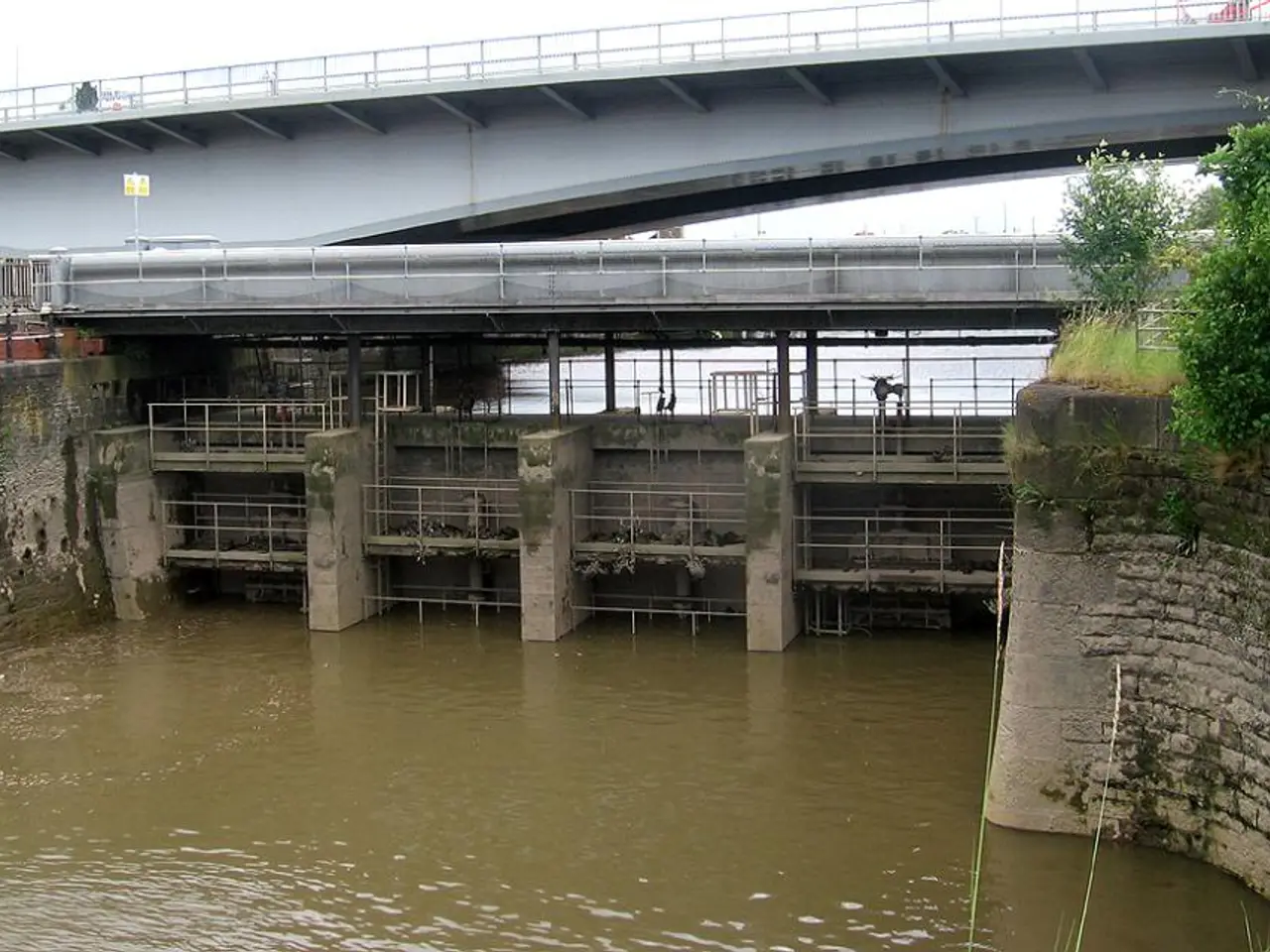Flooding warning issued for River Sutlej due to potential water release from India
Pakistan's Punjab Province Braces for Potential Flooding
Heavy monsoon rains in India have caused unusually high water levels in dams such as Bhakra Dam, Pong Dam, and Thein Dam, raising concerns of potential water release. This could lead to increased flow in the Sutlej River, causing flooding in vulnerable areas of Pakistan's Punjab province.
The Provincial Disaster Management Authority (PDMA) Punjab has issued flood alerts to the commissioners of Lahore, Sahiwal, Bahawalpur, Multan, and Dera Ghazi Khan cities, as well as to local government departments including agriculture, irrigation, health, forest, livestock, and transport.
The PDMA Punjab is continuously monitoring the water levels in River Sutlej, and emergency control room staff have been told to remain on 24-hour alert. Rescue 1122 disaster response teams have also been advised to stay on high alert.
The flood alert comes as monsoon rains continue to affect parts of Pakistan, resulting in the deaths of 305 people and injuries to 734 since June 26. The PDMA director general, Irfan Ali Kathia, stated that the Bhakra Dam located on River Sutlej has reached 61 percent of its storage capacity, while the Pong Dam and Thein Dam have reached 76 percent and 64 percent of their storage capacities, respectively.
River Sutlej, one of the five rivers that flow through Pakistan's Punjab, originates from the Himalayas and runs through India into eastern Pakistan. The monsoon rains within Pakistan combined with inflows from India’s dams have sharply increased water discharge, putting pressure on local protective embankments and submerging farmland and villages.
Authorities in Punjab have issued flood alerts via the PDMA and related agencies, urging residents of flood-prone riverine areas to evacuate and take precautions. Alerts have also been sent to the deputy commissioners of Kasur, Okara, Pakpattan, Bahawalnagar, Vehari, Lodhran, Bahawalpur, Multan, Muzaffargarh, Rajanpur, and Rahim Yar Khan cities.
Pakistan, one of the worst-affected countries due to climate change effects, has experienced erratic weather patterns over the past couple of years, including droughts, torrential rains, and heat waves. The flooding risk stems from heavy monsoon rains raising water levels in dams in India’s upper catchment areas, potential water release from these dams to manage their reservoir levels, and the resulting surge increasing water levels and flow in the Sutlej River within Pakistan.
The combination of local flooding risks and already saturated riverbanks and embankments downstream in Punjab could lead to low to medium-level flooding in vulnerable areas along the riverbanks, including Ganda Singh village and regions like Kasur and Pakpattan, among others. Authorities remain on high alert and have set up relief camps and rescue operations to mitigate the impact on affected communities.
[1] https://www.dawn.com/news/1661322 [2] https://www.geo.tv/latest/360761-punjab-on-high-alert-as-sutlej-water-level-rises [3] https://www.geo.tv/latest/359627-sutlej-river-water-level-rises-in-punjab [4] https://www.thenews.com.pk/print/816351-punjab-on-high-alert-as-sutlej-water-level-rises [5] https://www.thenews.com.pk/print/816626-punjab-on-high-alert-as-sutlej-water-level-rises
- The news of potential flooding in Punjab Province, Pakistan, has raised concerns about climate-change impacts on the region, as it has been one of the worst-affected countries due to erratic weather patterns in recent years.
- As the Bhakra Dam, Pong Dam, and Thein Dam in India have reached high water levels, the releasing of water from these dams could exacerbate the flooding situation in the vulnerable areas of Pakistan's Punjab province.
- The impact of the flooding could extend to the health sector, as flood-prone riverine areas are at risk of waterborne diseases and other health hazards.
- In the art and cultural sphere, the flooding could disrupt local events and celebrations, as well as potentially damage historical sites and artifacts.
- The increased flow in the Sutlej River could have impacts on the regional environmental-science and general-news agendas, as flooding threatens farmland, wildlife habitats, and whole communities.
- Given the current political climate-change debates and war-and-conflicts in the region, there may also be geopolitical implications stemming from the flooding situation in Punjab Province, potentially affecting regional stability and security.





